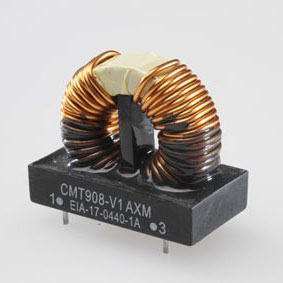Inductors and Chokes

Inductors and Chokes
A wide range of inductors and chokes rank among the many standard off-the-shelf parts and custom items engineered and manufactured by Triad Magnetics. Workhorses in the field of electronics, inductors are passive two-terminal electrical components that store energy in a magnetic field when electricity flows through it.
Specifications and Applications
Inductors have a wide range of uses, including noise suppression, high power applications, signals, radio frequency, and isolation. The most common types of inductors include:
- Coupled inductors. These inductors share a magnetic path and influence each other, making them handy for stepping up or stepping down voltage.
- Multilayer inductors. This type of inductor provides greater inductance, but only at lower maximum operating frequencies.
- Molded inductors. These inductors are housed within a plastic or ceramic housing.
- Power inductors. While this inductor can handle higher levels of power, it also generates more noise that requires magnetic shielding.
- RF inductors. High-frequency or radio frequency inductors are designed to operate at higher frequencies, but require additional techniques to reduce losses.
- Surface mount inductors. These inductors are very small and geared towards use in ever-smaller mobile devices.
Chokes are also a kind of inductor, but with the unique property of being able to help filter signals. Specifically, they can block high-frequency pulses while letting low-frequency pulses get through. When used, they reduce AC voltages to very small values and let the DC voltage pass through. Blocking or “choking” off the AC “ripples” the radio frequencies, allowing for a steady DC power supply, such as in a wall outlet.
There are two classes of chokes. Power and audio frequency chokes have an iron core for greater inductance and filtering ability, while RF chokes use iron powder or ferrite beads and complex winding patterns that allow them to effectively operate at higher frequencies.
The size of a choke is what determines its cutoff frequency or boundary, with larger chokes having lower cutoff frequencies and smaller chokes having higher cutoff frequencies. Chokes can be used for dimming, pulsing, microprocessor control, and other functions in applications that include line filtering, DC output filtering, oil and gas control systems, elevators/conveyors, robotics equipment, pumping equipment, UPS equipment, HVAC equipment, machine tool drives, variable frequency motor drives, and so on.